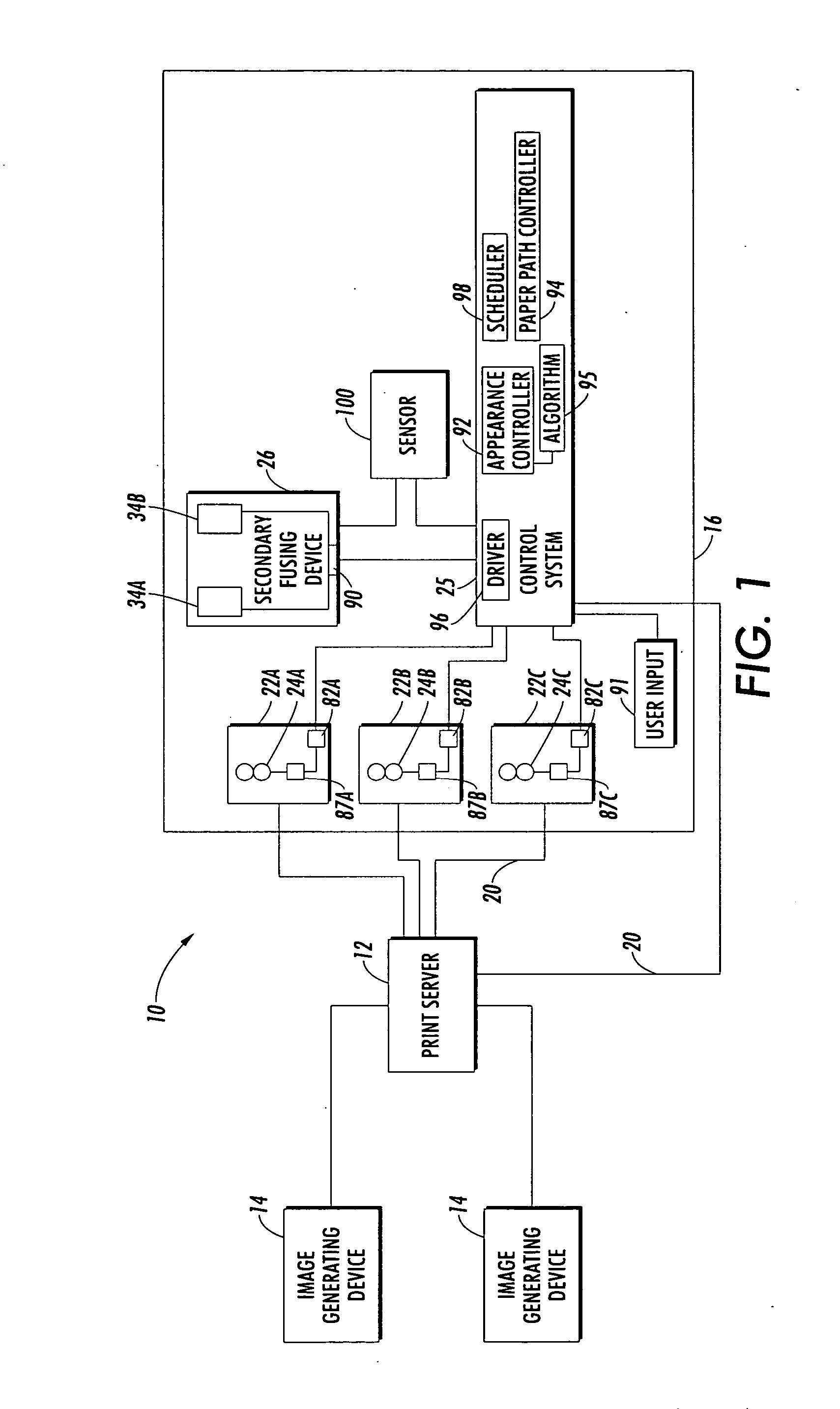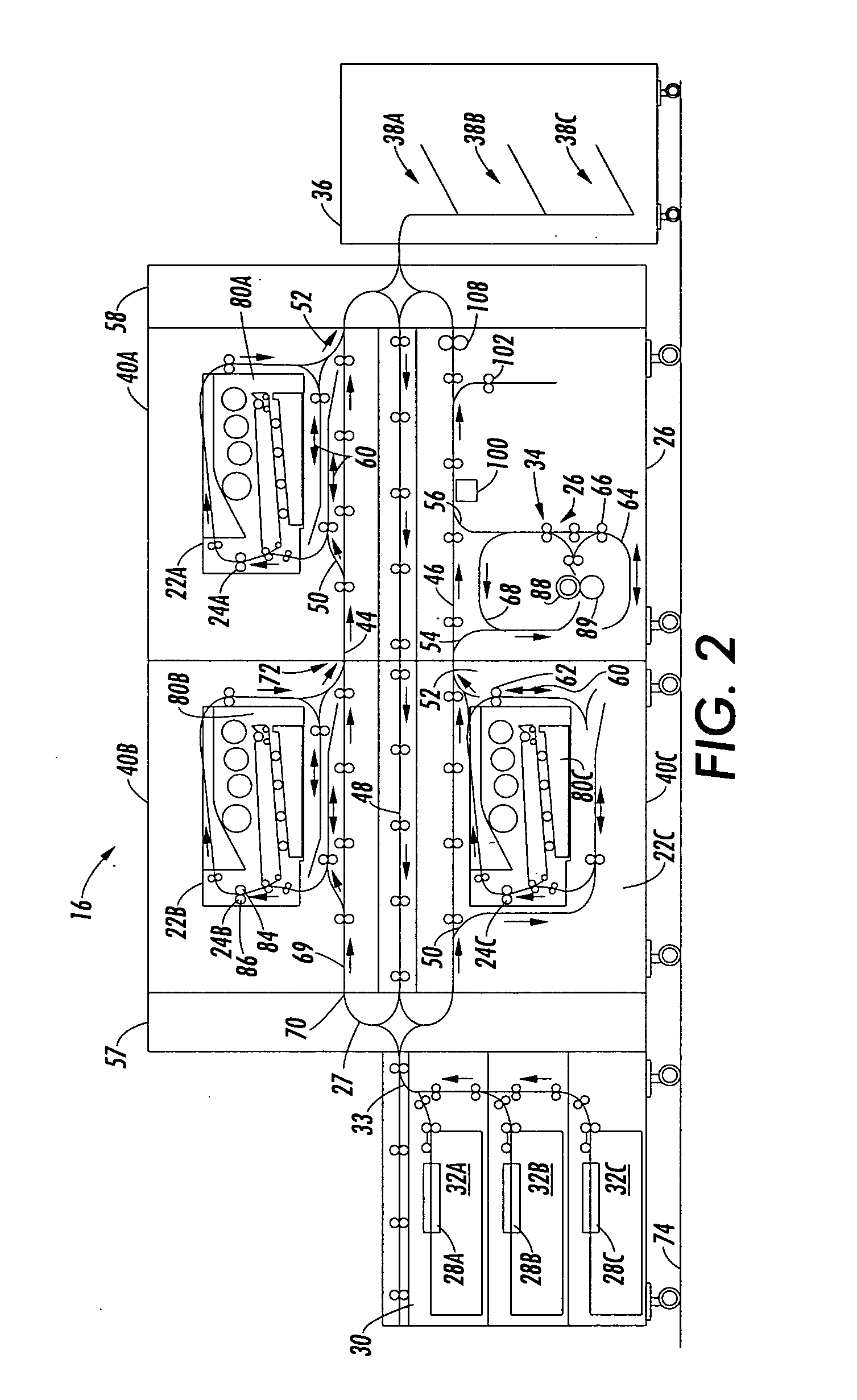Printing system
a printing system and fuser technology, applied in the field of fusers for printing systems, can solve the problems of non-uniformities on the surface, non-uniformities in gloss, etc., and achieve the effects of high gloss, low reliability of color fusers, and high gloss
- Summary
- Abstract
- Description
- Claims
- Application Information
AI Technical Summary
Benefits of technology
Problems solved by technology
Method used
Image
Examples
Embodiment Construction
[0040] A printing system is disclosed which includes one or a plurality of marking devices which supply printed media, such as sheets, to a common secondary fusing device. A marking device, as used herein, may encompass any device for applying an image to print media. Print medium may encompass a usually flimsy physical sheet of paper, plastic, or other suitable physical print media substrate for images, whether precut or web fed. In one embodiment, the common secondary fusing device augments the fusing performance of primary fusing devices resident in the marking devices. In another embodiment, a secondary fusing module includes at least two secondary fusing devices, each of which is capable of receiving printed media from two or more marking devices. The marking device(s) and secondary fusing device(s) may be under the control of a common control system for printing images from a common electronic print job stream. The printing system generates a print job or document, which is no...
PUM
 Login to View More
Login to View More Abstract
Description
Claims
Application Information
 Login to View More
Login to View More - R&D
- Intellectual Property
- Life Sciences
- Materials
- Tech Scout
- Unparalleled Data Quality
- Higher Quality Content
- 60% Fewer Hallucinations
Browse by: Latest US Patents, China's latest patents, Technical Efficacy Thesaurus, Application Domain, Technology Topic, Popular Technical Reports.
© 2025 PatSnap. All rights reserved.Legal|Privacy policy|Modern Slavery Act Transparency Statement|Sitemap|About US| Contact US: help@patsnap.com



